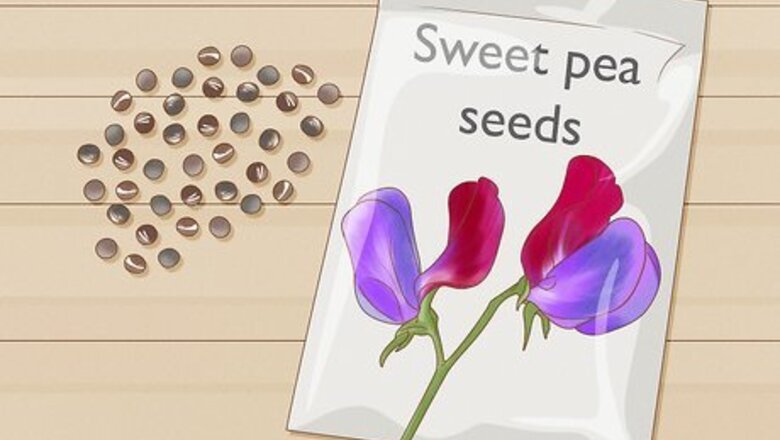
views
Starting Sweet Pea Seeds

Buy sweet pea seeds. Sweet peas are usually started from seed. You may either plant them in seed trays indoors and later transplanting them to the garden bed, or start them outside. Seeds are available for purchase at any garden store. For rarer varieties, check online retailers. "Old-fashioned" sweet peas will produce very fragrant flowers. Spencer varieties have bright colors, but less fragrance. You'll find them in pink, purple, blue, white and red.

Determine when to start your seeds. Sweet peas can be grown in any growing zone, but it's important to know the right time to get them ready. They must be planted as early as possible to form a strong root system and survive the summer. Therefore, starting seeds early in the year is usually your best bet. If you live in a temperate area where the ground does not freeze in the winter (USDA zones 8-10), you can plant your seeds directly in the ground as early as November, though waiting until January or February is also fine. Be sure to water them over the winter, and they'll emerge in spring. If you live in an area where the winters are cold, starting seeds indoors is your best bet. That way, the seedlings will be ready to plant as soon as the first frost has passed. If you wait too long to plant your seeds, they won't have time to take hold in the soil before the summer weather gets hot. Another option is to sow seeds directly in the ground in late winter, and then allow them to come up when they are ready.

Soak or nick your seeds. Sweet pea seeds have the best chance of germinating if you help penetrate the seed shell before planting. You can do this by either soaking them in a pan of water overnight, or using a tiny knife or nail clipper to nick the surface of each seed. If you soak your seeds, only plant those that have swelled during the overnight soaking. Discard those that haven't changed in size.
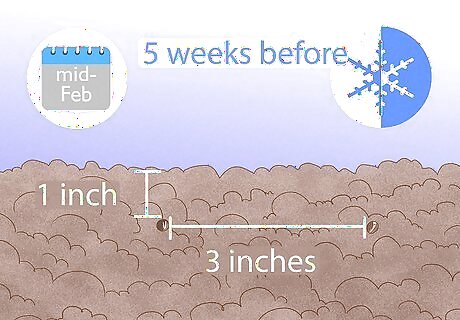
Plant the seeds in seed substrate. About 5 weeks before the last frost (usually mid-February or so), prepare small seed trays or peat containers with a seed starting mixture. Plant the seeds 1 inch (2.5 cm) deep and 3 inches (7.6 cm) apart, or in separate compartments.
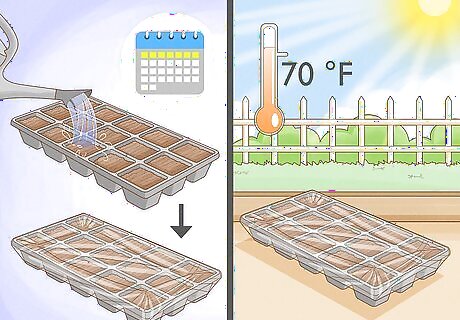
Keep them moist and warm. Water the seeds trays and cover them lightly in plastic wrap for the first week or so, to regulate the temperature. Keep them in a greenhouse or in a sunny window in a place where the temperature won't drop below 70 °F (21 °C). Once the seedlings sprout, remove the covering and keep them moist and warm until it's time to plant them just after the last frost. If you're using seed trays, thin out the seedlings to space them 5 inches (12.7 cm) apart once they've sprouted leaves. Pinch of flowers and buds before transplanting, so the seedlings' energy can be channeled into growing new roots.
Planting Sweet Peas

Choose a sunny spot in your yard or garden. Sweet peas of all varieties thrive in sunny areas, making them a great choice for exposed sections of fence and walls. In the heat of summer, sweet peas will do fine in partial shade, but it's better to find someplace sunny to be on the safe side. Since sweet peas love to climb, find a spot where they can grow toward the sky. They produce small tendrils that will latch onto any type of pole you plant them near. Sweet peas make an excellent natural decoration for fences. If you have a wooden or chain link fence you want to brighten up, plant sweet peas there. Sweet peas are often grown on trellises or archways. This is another lovely choice, and will lend your garden a country cottage feel. If you don't have a suitable place for sweet peas, erect a few bamboo posts in your garden and plant sweet peas there. It'll lend some height and interest to your garden. You could also create a tower of stakes in a pot or a small arbor. You can plant sweet peas among other plants, like shrubs or vegetables.
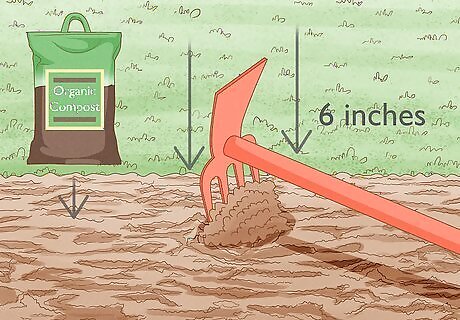
Enrich the soil. Sweet peas grow best in rich soil that drains well. Prepare the soil for planting by tilling it to a depth of 6 inches (15.2 cm) and working in some compost or manure. This is especially important if your soil is clay heavy; you'll need to work in extra compost to make sure it drains well enough for sweet peas' roots. To determine whether the soil drains well enough, observe it after a heavy rain. If water collects and puddles and takes time to drain, the soil there doesn't drain well. If the water soaks in right away, it should be fine for your seedlings. Using a raised bed is a good option if you feel your soil is too clay heavy to support seedlings. This will come in handy for other plants you want to grow as well.

Plant the sweet peas in early spring. Whether you started your seeds inside and are planting seedlings, or you want to plant your seeds directly in your garden bed, early spring is the right time to do it. If you live in a warm area where the ground never freezes, you can plant in January or February. If you live in an area where the ground does freeze, wait until just after the first frost, in early to mid April.

Dig holes for the sweet peas. If you're transplanting seedlings, dig holes 5 inches (12.7 cm) apart and deep enough to set the seedlings root balls into the ground. Pat fresh soil lightly around the stems of the seedlings. For seeds you're planting directly in the ground, dig holes one inch deep and 3 inches (7.6 cm) apart. When they sprout, you'll need to thin them out to 5 inches (12.7 cm) apart, so each plant has plenty of room to grow.
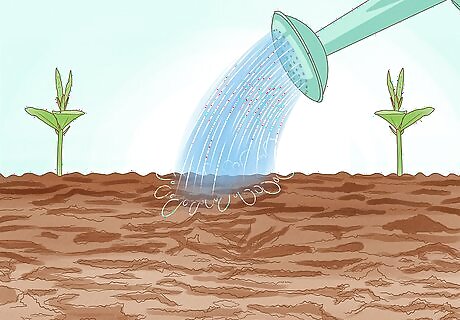
Water the sweet peas. Finish by giving the plants a good dose of fresh water. The sweet peas will begin to spring up quickly once warmer weather sets in.
Maintaining Sweet Peas
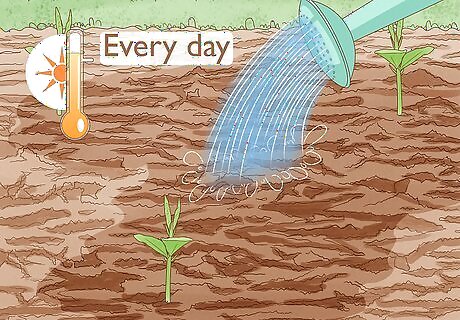
Water them often during the hot months. Sweet peas must be kept nice and wet throughout the summer. Water them lightly every day it does not rain. Check the soil surrounding the sweet pea stems often to make sure it doesn't dry out.

Fertilize once a month. Sweet peas are quite prolific, and a monthly application of mild fertilizer will keep them blooming for many weeks. It's not mandatory, but it's helpful if you want to make the most of your flowers. Use compost, manure or a high-potassium commercial fertilizer application.

Harvest the flowers regularly. Cutting the flowers promotes new growth, so don't hesitate to bring in some fresh blossoms or make a bouquet for a friend. Wait until the flowers have reached their fragrant and colorful peaks before cutting. You should also remove faded blossoms, which sap energy from the plant and prevent more flowers from growing.

Save the seed pods from your plants for next year's crop. These annuals won't come back on their own next year, but you can enjoy them again if you save the seed pods and plant them again in the winter or spring, depending on where you live.
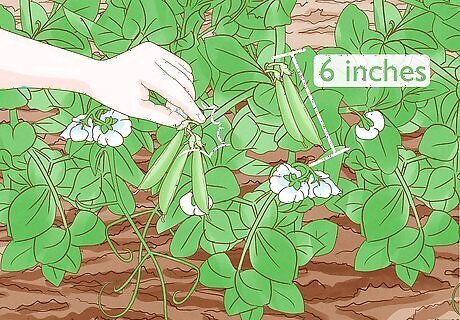
Pinch off the shoots once your peas are 6 inches or longer. This will encourage new growth in the form of more side-shoots and flowers. You can just use your fingernails to pinch off the shoots.




















Comments
0 comment